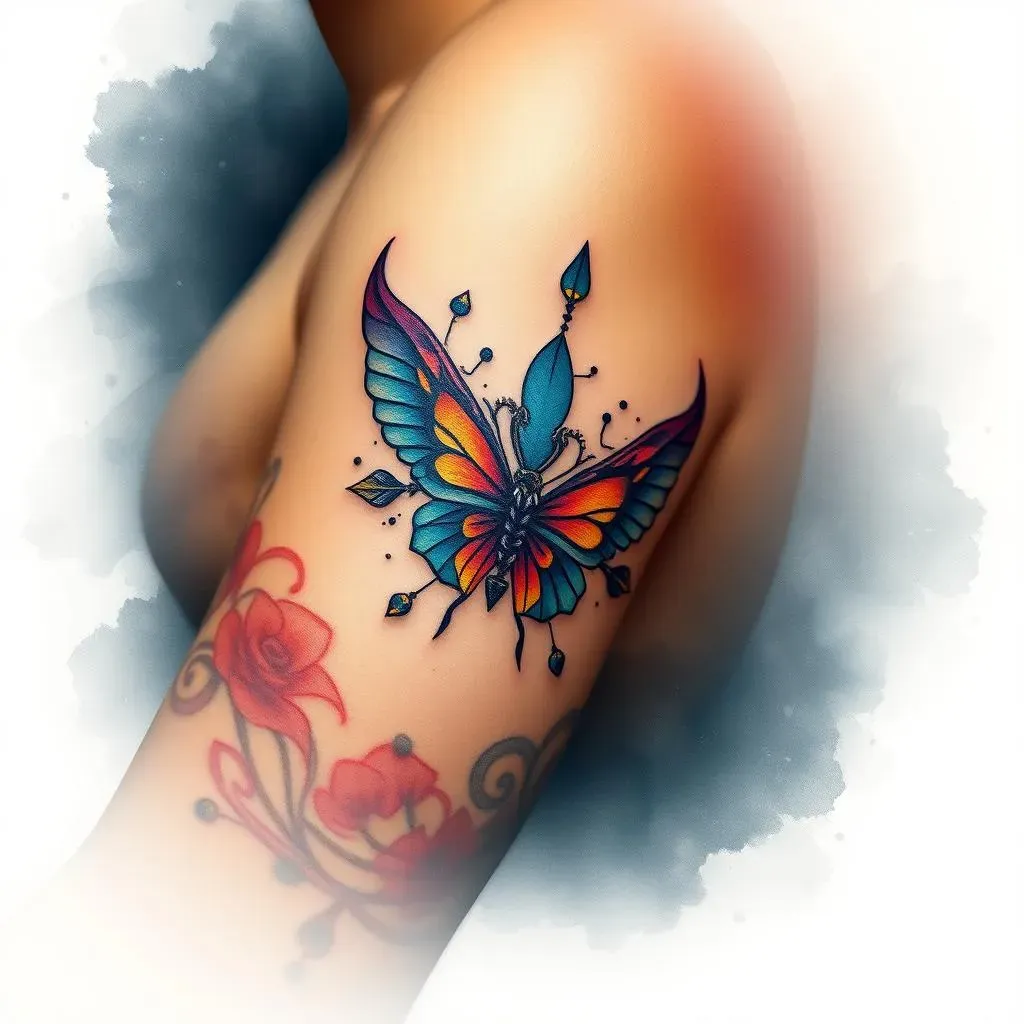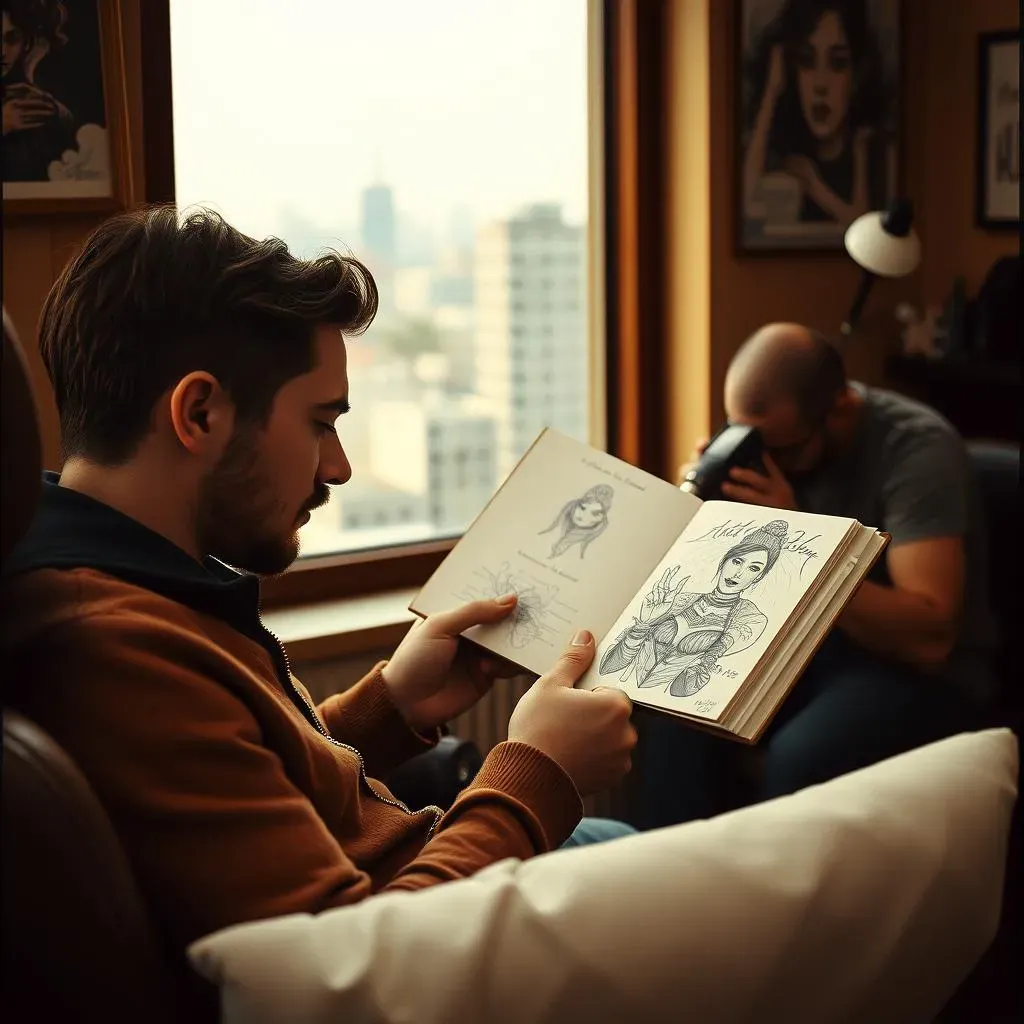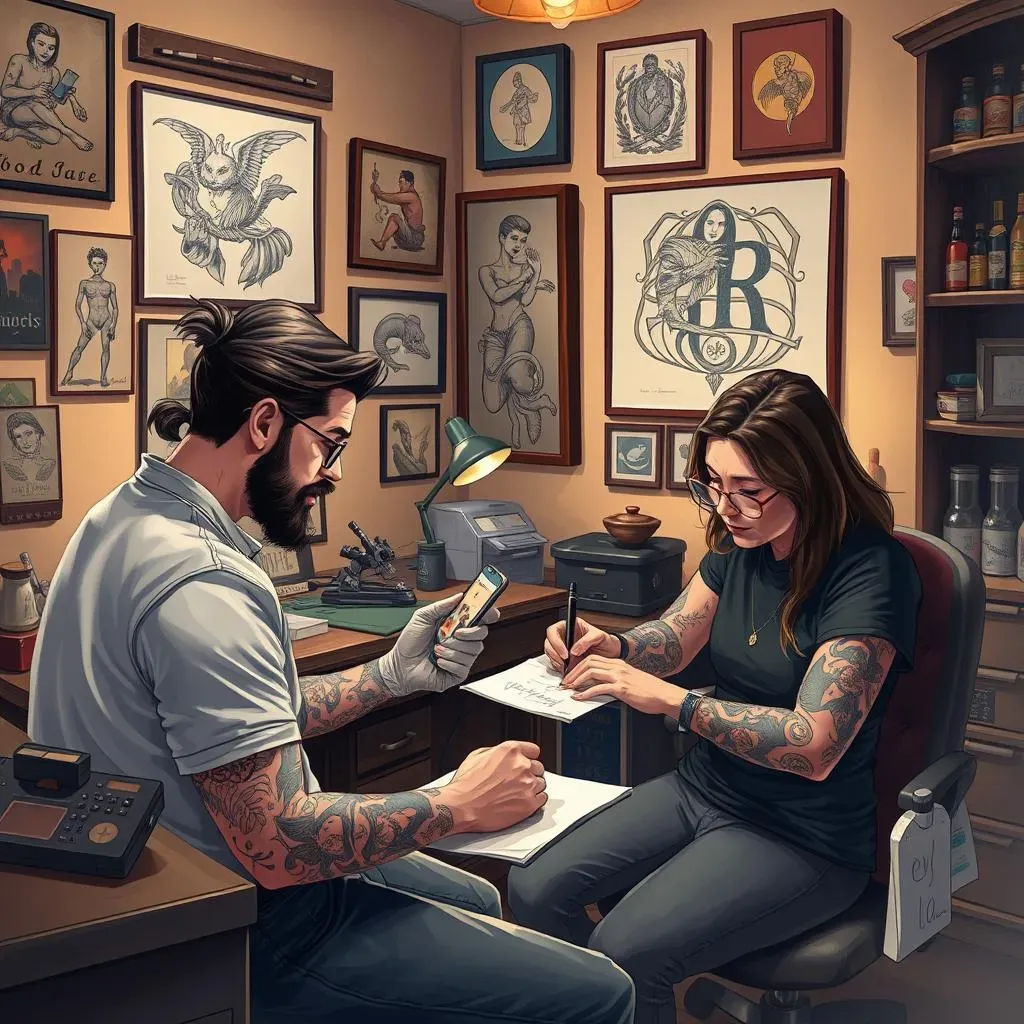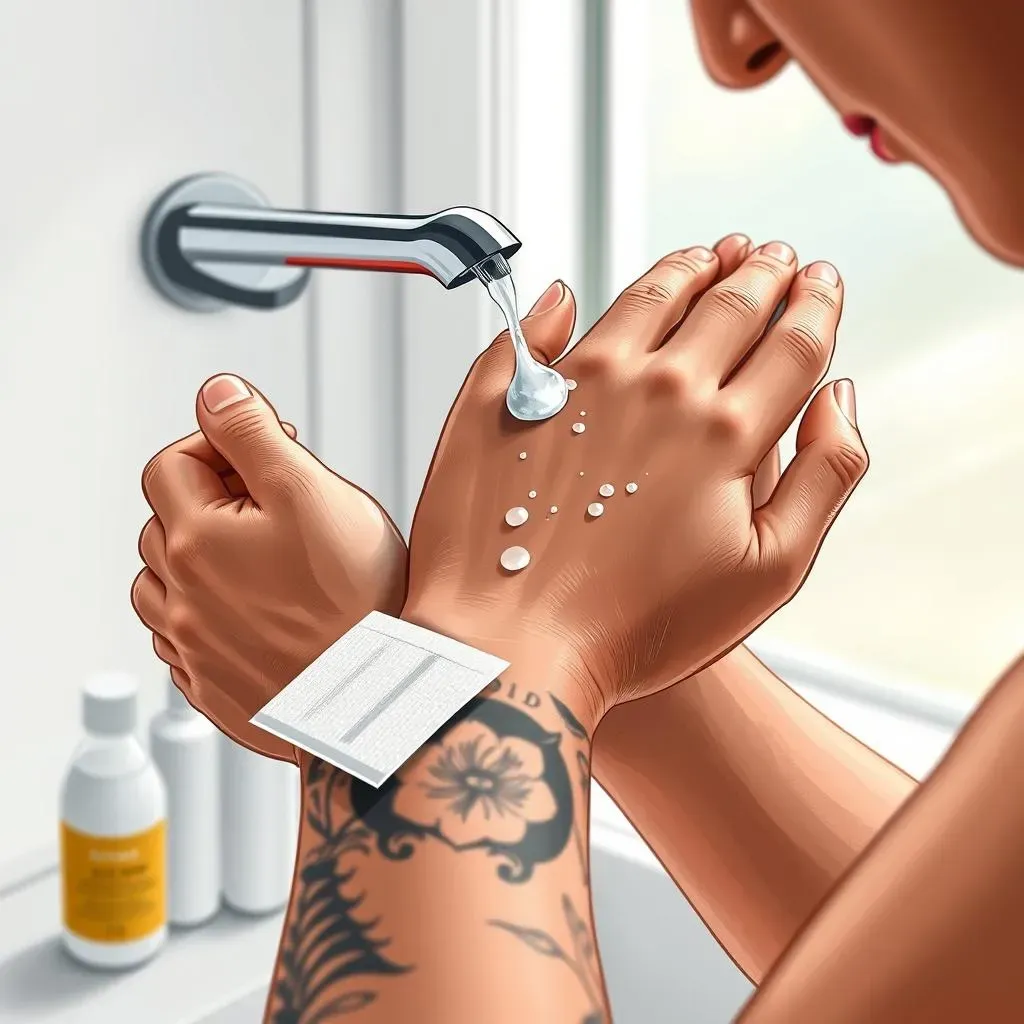Table of Contents
Tired of seeing the same old tattoos walking around? Yearning for ink that truly represents you, your story, your passions? You're in the right place. Forget flipping through generic flash art books – it's time to explore the world of tattoo designs custom. This isn't just about getting a tattoo; it's about crafting a personal statement, a wearable piece of art that's as unique as you are. In this article, we'll dive deep into why custom designs reign supreme, how to find the perfect artist to bring your vision to life, and what to expect during the design process. We'll also break down the costs involved and, crucially, how to care for your custom tattoo so it looks vibrant for years to come. So, ditch the ordinary and get ready to embark on a journey to create a tattoo that's 100% you. Let's get started!
Why Choose Custom Tattoo Designs Over Flash Art?
Why Choose Custom Tattoo Designs Over Flash Art?
Uniqueness and Personal Expression
Let's be honest, flash art – those pre-drawn designs hanging in tattoo shops – can be tempting. They're readily available, often cheaper, and you can get inked right away. But here's the thing: how many other people have that exact same design? With a custom tattoo, you're not just getting ink; you're telling your story. It's a chance to visually represent your passions, your beliefs, your memories – all in a way that's completely unique to you. It's about creating a meaningful piece of art that resonates with your soul, not just filling space on your skin.
Beyond the Ordinary: The Power of a Custom Tattoo
Think about it. Flash art is designed to appeal to the masses. It's generic by nature. A custom design, on the other hand, starts with you. You collaborate with the artist, sharing your ideas, your inspirations, and your vision. They then translate that into a one-of-a-kind piece of art that perfectly captures your personality and style. It's an investment in yourself, a celebration of your individuality, and a permanent reminder of what makes you, you.
Finding the Right Tattoo Artist for Your Custom Design
Finding the Right Tattoo Artist for Your Custom Design
Style Matters: Matching Your Vision to an Artist's Expertise
so you're ready to ditch the flash and go custom. Awesome! But hold up – not all tattoo artists are created equal. Just like any art form, tattooing has different styles, and artists tend to specialize. Are you dreaming of delicate watercolor florals? Or maybe a bold, geometric design? Perhaps a realistic portrait of your beloved pet? Finding the right tattoo artist means finding someone whose style aligns with your vision. Do your research! Scour Instagram, visit local shops, and really pay attention to the artist's portfolios. Look for consistency and a clear mastery of the style you're after. Don't be afraid to ask questions about their experience and approach to custom work.
It's not just about finding someone who can do the style; it's about finding someone who loves doing it. Passion translates into better art, plain and simple. And remember, a good artist will also be honest with you. If they don't think their style is the right fit for your idea, they should be upfront about it. That kind of integrity is a great sign!
Beyond the Portfolio: Communication and Collaboration
So, you've found an artist whose style makes your heart sing. Fantastic! But the journey doesn't end there. The next crucial step is communication. A custom tattoo is a collaborative process, and you need to be able to clearly articulate your vision to the artist. Do they listen attentively? Do they ask clarifying questions? Do they offer suggestions and insights that enhance your idea? A good artist will not only execute your design flawlessly but will also elevate it with their expertise. They'll understand the nuances of tattooing – what works well on skin, how the ink will age, and how to create a design that's both beautiful and enduring.
Don't underestimate the importance of a good vibe! You're going to be spending several hours (or even multiple sessions) with this person, so it's essential that you feel comfortable and confident in their abilities. Trust your gut. If something feels off, don't be afraid to explore other options. This is your body, your art, and your investment. Choose wisely!
The Custom Tattoo Design Process: From Concept to Skin
The Custom Tattoo Design Process: From Concept to Skin
From Idea to Ink: Mapping Out Your Tattoo Journey
Alright, so you've got your artist lined up – now comes the really fun part: bringing your tattoo idea to life! The custom tattoo design process is a journey, a collaboration between you and your artist. It all starts with a consultation. This is where you sit down with your artist and really hash out your vision. Bring reference images – photos, drawings, other tattoos you admire – anything that helps convey what you're looking for. Be prepared to talk about the meaning behind your tattoo, the symbolism you want to incorporate, and the overall aesthetic you're aiming for. The more information you provide, the better equipped your artist will be to create a design that truly captures your essence.
After the initial consultation, your artist will typically create a sketch or digital rendering of your design. This is your chance to provide feedback and make any necessary adjustments. Don't be afraid to speak up! This is your tattoo, and you want to make sure it's perfect. The artist might tweak the linework, adjust the shading, or even suggest different placement options based on their expertise. This back-and-forth process is crucial for ensuring that you're both on the same page and that the final design is something you're absolutely thrilled with. Once you've approved the design, your artist will create a stencil, which will be applied to your skin as a guide for the actual tattooing process. And then, the magic happens!
Step | Description |
|---|---|
Consultation | Discuss your ideas, meaning, and references with the artist. |
Sketch/Rendering | The artist creates a preliminary design for your feedback. |
Revisions | Provide feedback and make necessary adjustments to the design. |
Stencil Creation | The artist creates a stencil based on the final approved design. |
Tattooing | The artist applies the tattoo using the stencil as a guide. |
Cost Factors for Custom Tattoo Designs
Cost Factors for Custom Tattoo Designs
Size and Complexity: The Bigger, The Bolder, The Pricier
Alright, let's talk money. Cost factors for custom tattoo designs can vary wildly, so it's crucial to understand what influences the final price tag. First and foremost, size matters. A small, simple design will obviously cost less than a full back piece with intricate details. Complexity also plays a huge role. A tattoo with lots of fine lines, shading, and color gradients will require more time and skill, which translates to a higher hourly rate. Think of it like ordering a pizza – the more toppings you add, the more you're going to pay!
Before you get sticker shock, remember that you're paying for quality. A skilled artist with years of experience will charge more than a newbie, but their expertise is worth it. They'll not only create a stunning piece of art, but they'll also ensure that it's applied safely and professionally. Don't skimp on quality when it comes to something that's going to be on your body forever. It's better to save up and get the tattoo you truly want than to settle for a cheaper option that you might regret later.
Artist's Hourly Rate and Shop Minimums: Know Before You Go
Another key factor is the artist's hourly rate. This can vary depending on their experience, reputation, and location. It's common for established artists in major cities to charge significantly more than artists in smaller towns. Be sure to ask about the hourly rate upfront and clarify whether it includes the cost of supplies. Many shops also have a minimum charge, which is the lowest amount they'll charge for any tattoo, regardless of size or complexity. This is to cover the cost of setting up the station, sterilizing equipment, and using disposable supplies. Always factor in the shop minimum when estimating the overall cost of your tattoo.
Also, don't forget to factor in potential touch-up sessions. Even with proper aftercare, some tattoos may require minor touch-ups to correct fading or imperfections. Some artists offer free touch-ups within a certain timeframe, while others charge an hourly rate. It's always a good idea to clarify their touch-up policy before getting inked. And lastly, don't forget to tip your artist! A standard tip is 15-20% of the total cost of the tattoo. It's a great way to show your appreciation for their hard work and dedication.
Cost Factor | Description |
|---|---|
Size | Larger tattoos require more time and ink. |
Complexity | Intricate designs with fine details and shading take longer. |
Artist's Hourly Rate | Varies based on experience, reputation, and location. |
Shop Minimum | The lowest amount charged for any tattoo. |
Touch-Ups | Potential additional cost for correcting imperfections. |
Caring for Your Custom Tattoo to Ensure Longevity
Caring for Your Custom Tattoo to Ensure Longevity
The Immediate Aftercare Ritual: Protecting Your Investment
you've just gotten your amazing custom tattoo – congrats! But the work doesn't stop there. Caring for your custom tattoo to ensure longevity starts the moment you leave the shop. Your artist will apply a bandage or protective film to shield your new ink from bacteria and environmental irritants. Follow their instructions to the letter! Generally, you'll need to keep the bandage on for a few hours (or sometimes even a few days, depending on the type of bandage used). Once you remove it, gently wash the area with mild, fragrance-free soap and lukewarm water. Pat it dry with a clean paper towel – avoid using a regular towel, as it can harbor bacteria. And whatever you do, resist the urge to pick or scratch! I know it's tempting when it starts to itch, but trust me, you'll regret it.
Think of your fresh tattoo as an open wound (because, well, it is!). Proper aftercare is crucial for preventing infection and ensuring that your tattoo heals properly. A little bit of diligence in the early stages will pay off big time in the long run.
Moisturize, Moisturize, Moisturize: Keeping Your Ink Hydrated
Once your tattoo is clean and dry, it's time to moisturize. This is where things can get a little confusing, as there are tons of different lotions and ointments on the market. The key is to choose something that's fragrance-free, dye-free, and hypoallergenic. Many artists recommend using Aquaphor or a similar healing ointment for the first few days, as it creates a protective barrier that helps to lock in moisture and promote healing. After that, you can switch to a lighter, fragrance-free lotion. Apply a thin layer of moisturizer several times a day, or whenever your tattoo feels dry. The goal is to keep the skin hydrated without overdoing it. Too much moisture can actually hinder the healing process.
Pay attention to your skin and adjust your moisturizing routine accordingly. If you notice any signs of irritation, such as redness, swelling, or excessive itching, stop using the product immediately and consult with your artist or a dermatologist.
Sun Protection is Non-Negotiable: Shielding Your Art from UV Rays
The sun is the enemy of tattoos. UV rays can cause your ink to fade and blur over time, so it's essential to protect your tattoo from sun exposure. Once your tattoo is fully healed, apply a high-SPF sunscreen to the area whenever you're going to be spending time outdoors. Choose a broad-spectrum sunscreen that protects against both UVA and UVB rays. Reapply sunscreen every two hours, or more often if you're swimming or sweating. And remember, even on cloudy days, UV rays can still penetrate your skin, so don't skip the sunscreen!
In addition to sunscreen, you can also protect your tattoo by wearing loose-fitting clothing that covers the area. This is especially important during the first few months after getting your tattoo, when the ink is still settling in. With proper sun protection, you can keep your tattoo looking vibrant and fresh for years to come.
Aftercare Step | Description | Product Recommendation |
|---|---|---|
Initial Bandage | Leave on as directed by your artist. | Tegaderm, Saniderm |
Washing | Gently wash with mild, fragrance-free soap. | Dr. Bronner's Baby Unscented, Cetaphil |
Moisturizing | Apply a thin layer of fragrance-free lotion. | Aquaphor (initial healing), Lubriderm, Aveeno |
Sun Protection | Apply broad-spectrum sunscreen with high SPF. | Neutrogena Ultra Sheer, EltaMD UV Clear |
Conclusion: Your Ink, Your Story
Choosing a custom tattoo design is an investment in yourself, a commitment to expressing your individuality through art. While it might require more time and effort than picking something off the wall, the result is a meaningful piece that resonates with you on a deeper level. By understanding the design process, finding the right artist, and properly caring for your ink, you're ensuring that your custom tattoo remains a vibrant testament to your personal narrative for years to come. So go ahead, unleash your creativity and wear your story with pride.